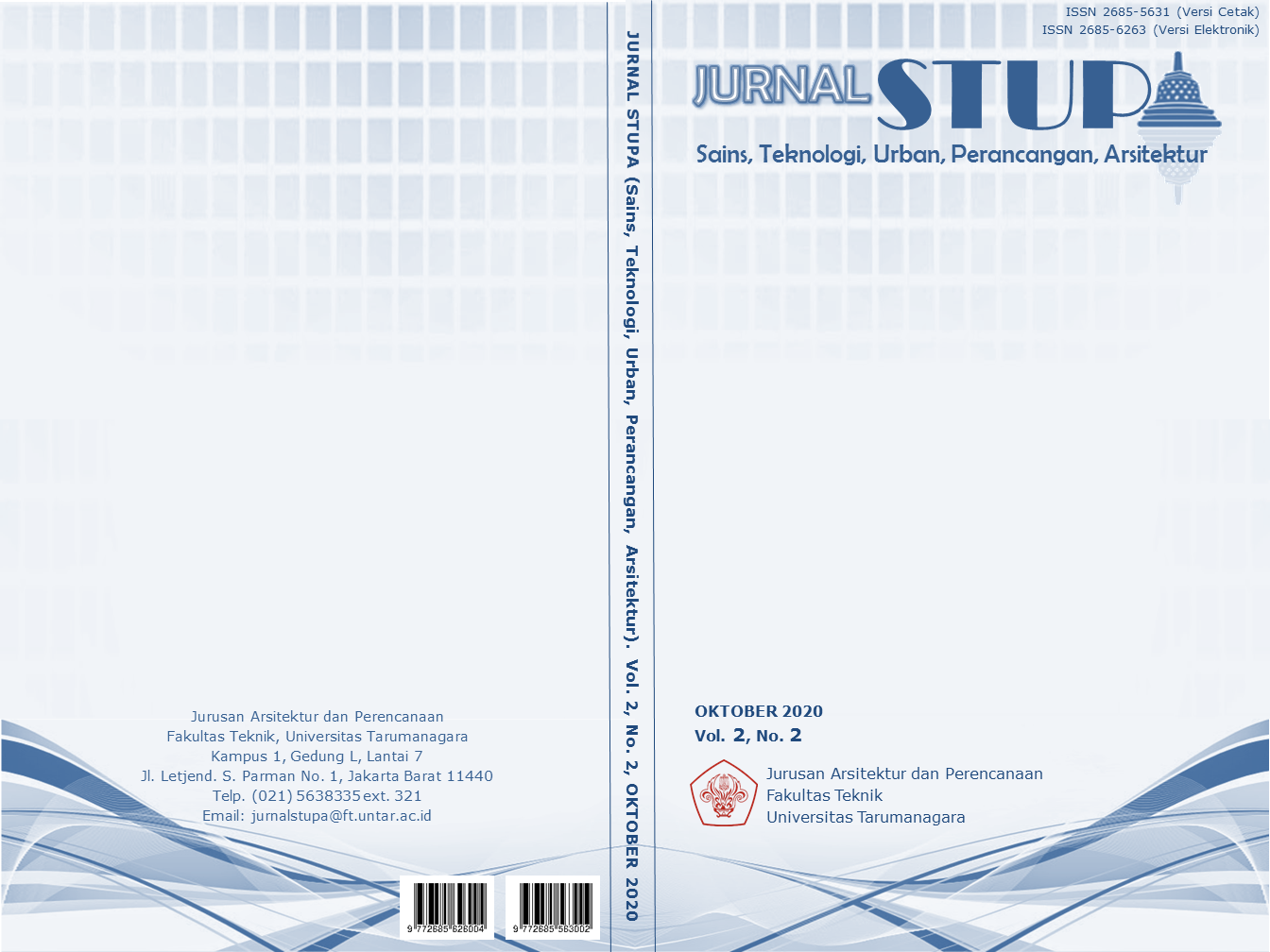PASAR KREATIF KULINER
Main Article Content
Abstract
City life itself known for the busy 24/7 with non-stop busy activities. Monotous activities carried out by city residents makes them frustrated and bored. A need for a place to let them rest for a bit, and that’s where third place is needed. Study stated that city life has problems within the physical and mental health of the residents itself. A simple entertainment such as live music or gathering over food has become their go to rest. C(reative)ulinary Market is a project with third place as the theme for the city residents. Located in Palmerah, within 3 issues detected which area morning to night activities that cause unhealthy lifestyle patterns, no bonding between communities, and no play space for children. Using the design method of dis-programming and behavioural architecture, which comebines program within different properties and examines surrounding people activities. Design concept based on broad food system in which influences for the layout and circulation. 2 program provided, creative culinary in where there’s market and food space for socializing and gather over food, and there’s also cooking class. Active and social space, there’s playground, roof garden, and park within the site. Two important program above aim to provide a place to socialize while providing education on the importance of healthy living. In addition, food brings people together.
Key words: Active; City; Creative Culinary; Food; Health
Abstrak
Kehidupan kota dikenal dengan kehidupan arus padat 24/7. Kegiatan monoton yang dilakukan warga kota membuat masyarakat merasa bosan dan jenuh. Dibutuhkan satu tempat untuk mereka melepas penat sebentar, dan disitulah dibutuhkan third place. Studi menyebutkan bahwa kehidupan kota mempunyai masalah dengan kesehatan fisik dan mental warga kota. Hiburan sederhana, seperti live music atau sekedar makan dan kumpul bersama menjadi sasaran bagi warga kota dalam menghilangkan penat sejenak. Proyek dengan judul C(reative)ulinary Market adalah proyek rancangan bertemakan third place bagi masyarakat kota. Berlokasi di Palmerah, dengan 3 isu yaitu aktivitas padat pagi hingga malam yang menyebabkan pola gaya hidup tidak sehat, tidak ada hubungan erat antar masyarakat, dan tidak ada ruang bermain bagi anak-anak. Menggunakan metode perancangan dis-programming dan behavioural architecture, dimana mengkombinasi program dengan sifat berbeda dan juga meneliti dan mengkaji perilaku masyarakat sekitar tapak. Konsep desain bertajuk pada broad food system yang berpengaruh pada denah dan sirkulasi proyek. Program yang disediakan terdapat 2, kuliner kreatif (creative culinary) dimana terdapat market & food space guna untuk bersosialisasi dan berkumpul bersama sambil makan dan ada cooking class, ruang aktif-sosial (active and social space) terdapat playground dan roof garden serta taman di tapak. Kedua program penting di atas bertujuan untuk memberikan tempat bersosialisasi sekaligus memberikan edukasi akan pentingnya hidup sehat. Selain itu, makanan juga menyatukan antar sesama.
Article Details
Section
References
Ching, F. D.K. (1996). Architecture: Form, Space and Order 2nd Edition. Canada: John Wiley & Sons
Fraga, J. (2019). Here’s How Living in a City Can Mess with Your Mental Health, dalam https://www.healthline.com/health/mental-health/living-in-a-city#1 di akses tanggal 10 Februari 2020.
Gjerde, M. (2016) Form follows Food: An Examination of Architecture’s Role in Urban Farming. PP.249-258. New Zealand: Victoria University of Wellington
Handayani, I. (2017). 11 Persen Masyarakat Indonesia Rutin Makan di Luar Rumah dalam https://www.beritasatu.com/gaya-hidup/432721-11-persen-masyarakat- indonesia-rutin-makan-di-luar-rumah di akses tanggal 13 Februari 2020
Herimsath, C. (1988). Behavioral Architecture. US: McGraw-Hill.
McLaren, D; Agyeman, J. (2015). Sharing Cities: A Case for Truly Smart and Sustainable Cities. US: MIT Press
Mowen, C. J. dan Minor, M. (2002). Perilaku Konsumen. Jakarta: Erlangga
Nordisk, N. (2015). Cities Changing Diabetes. US: NN
Oldenburgh, R. (1989). The Great Good Place. US: Da Capo Press
Rapp, M. A. (2017). Cities and Mental Health. dalam jurnal Deutsches Arzteblatt International, 114(8): 121-127. Berlin: Department of Epidemiology and Healthy Monitoring of the Robert Koch Institure
Tschumi, B. (2005). Event-Cities 3 Concept vs. Context vs. Content. US: MIT Press
Tuan, Y.F. (1977). Space and Place: The Perspective of Experience. US: University of Minnesota Press

